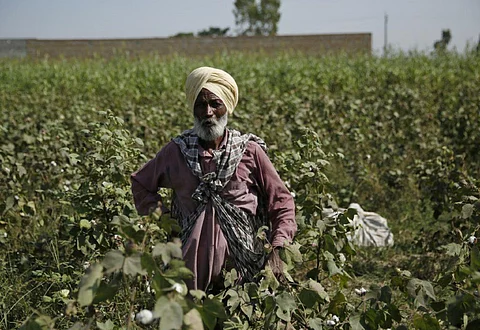The Green Revolution and a dark Punjab
Punjab — known as the ‘Granary of India’ — produces 20 per cent and nine per cent of India’s wheat and rice respectively. At the international level, this represents three per cent of the global production of these crops. The state is responsible for two per cent of the world’s cotton and wheat production and one per cent of the world’s rice production.
This is possibly because of the Green Revolution, a period when Indian agriculture was converted into an industrial system. Modern methods and technology — including high-yielding variety (HYV) seeds, tractors, irrigation facilities, pesticides and fertilisers — were adopted.
The Green Revolution was an endeavour initiated by Norman Borlaug in 1970. It led to him winning the Nobel Peace Prize for his work in developing HYVs of wheat and is often credited with having transformed India from “a begging bowl to a bread basket”.
Punjab is frequently cited as the Green Revolution’s most celebrated success story. In the 1970s, a large dosage of pesticides revolutionised farming ways in India, with the results considered good at the time.
The picture, however, is no longer rosy. The consequences of the Green Revolution have come under constant global scrutiny.
In due course, pests grew immune to pesticides and farmers, in desperation, began pumping out more of these chemicals. Their excessive use not only contaminated the air, soil and the water table, but also exposed plants and humans to the threat of adulterated pesticides.
While the Green Revolution provided a few solutions to the problem of food security, Punjab began to face a completely new range of problems: Decaying soil, pest-infested crops and indebted farmers.
The state — known as the torchbearer of the Green Revolution — also happens to be the first state that suffers from its adverse consequences.
Proponents of the Green Revolution focus on maximising yield in the fight against hunger, comparing pesticides with drugs used for the sick.
People were generally unaware of the toxicity and harmful effects of pesticides, long after the publication of Silent Spring by Rachel Carson in the 1960s.
They are, however, still considered the most effective and possible weapon against pests threatening crops. As a result, the domestic pesticide market has grown to an estimated Rs 20,000 crore. India developed 217,000 tonnes of pesticides in fiscal year 2019.
The Green Revolution resulted in a large-scale use of pesticides and synthetic nitrogen fertilisers, giving rise to improved irrigation projects and crop varieties.
The main objective was to gain food security through scientific methods. There were, however, little or no efforts to educate farmers about the high risk associated with the intensive use of pesticides.
The price Punjab has paid for food security comprises of cancer, renal failure, stillborn babies and birth defects.
Pesticides banned in Punjab include Phosphamidon, Methomyl, Phorate, Triazophos and Monocrotophos. They are, however, still in use in India, along with several other Class I pesticides.
Many of them are banned in several countries: Phosphamidon is banned in 49 countries, Phorate in 37, Triazophos in 40 and Monocrotophos in 60.
There is a significant effect of using these pesticides on people’s health, as is evident in Punjab’s Malwa region.
Pesticides are sprayed on crops usually by untrained farm labourers without following prescriptions, instructions and precautions, using faulty nozzles and approximated higher dosages.
This causes more harm than good to crops and also becomes a cause for environment and soil pollution, with productivity and ecosystem services also affected.
It leads to indiscriminate use of pesticides, something that is rampant in our country.
There are two alternatives available for getting out of the food production crisis in Punjab. One is to continue down the road of further intensification, while the other is to make food production economically and ecologically viable again by reducing input costs.
Organic crops need to be grown, rather than bringing crops that are not suitable for the physiography of the region. Farming of local crops needs to be done as well.
Sadly, the Government of India appears to have adopted the former strategy: Seeking to solve the problems of the first Green Revolution by launching a second.
The strategy and rhetoric are the same. Farmers are encouraged to replace old technologies of the first revolution with the new bio-technologies of the second and to substitute wheat and rice grown for domestic consumption with fruit and vegetables for the export market.
Views expressed are the author’s own and don’t necessarily reflect those of Down To Earth.


